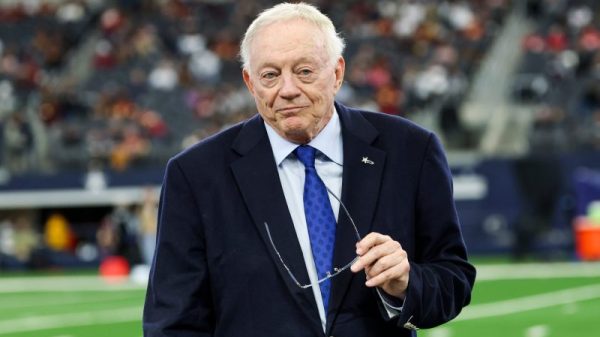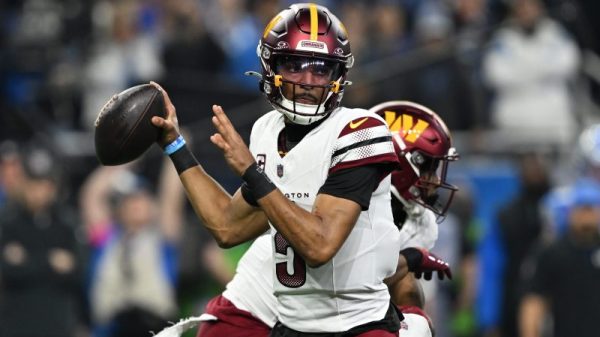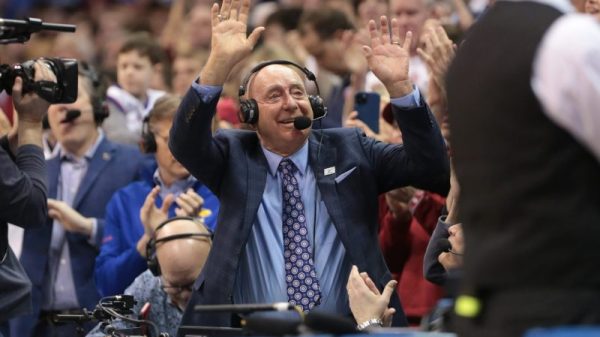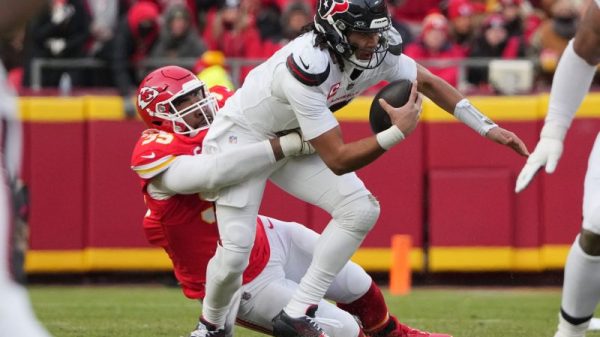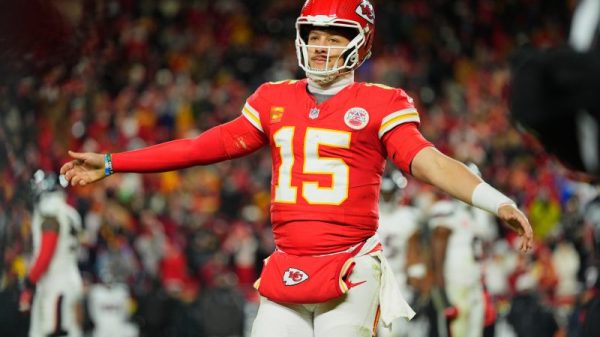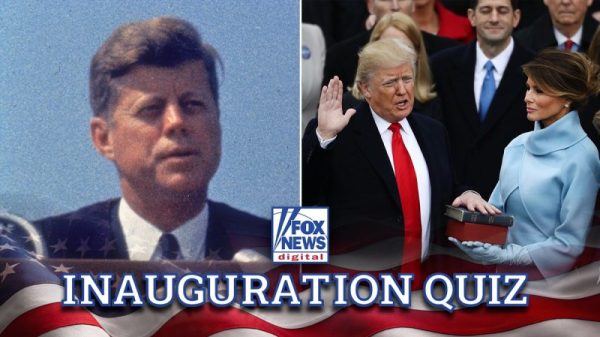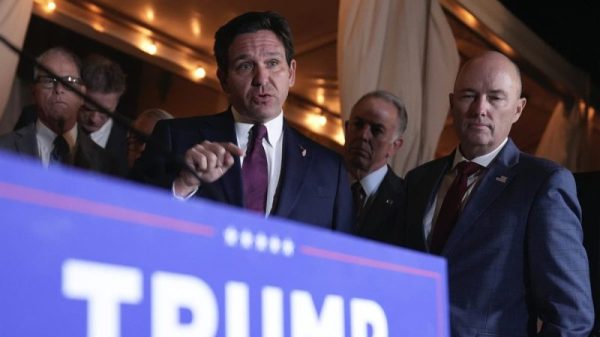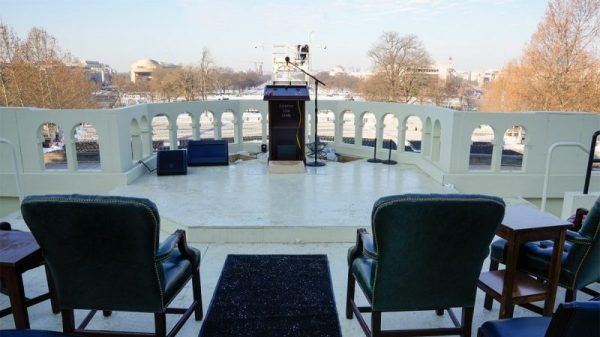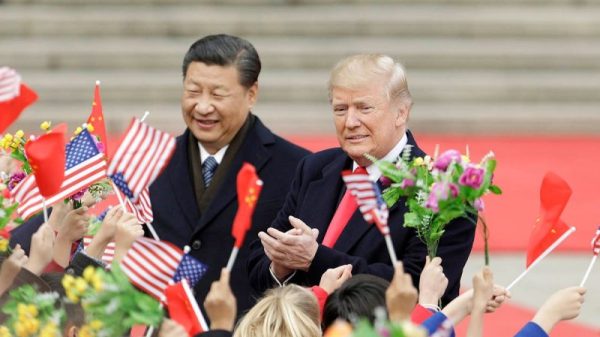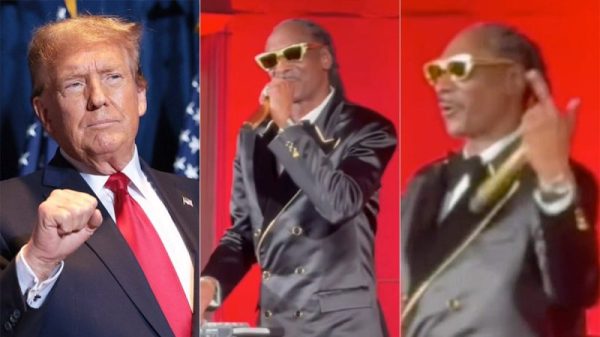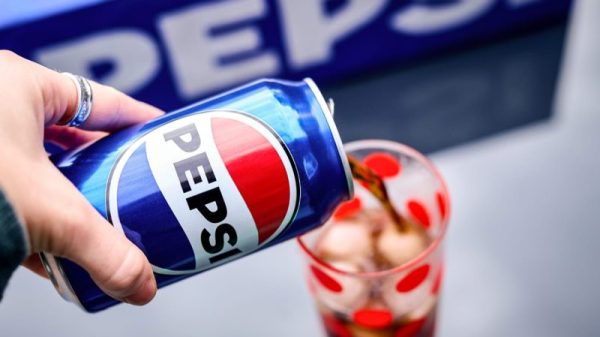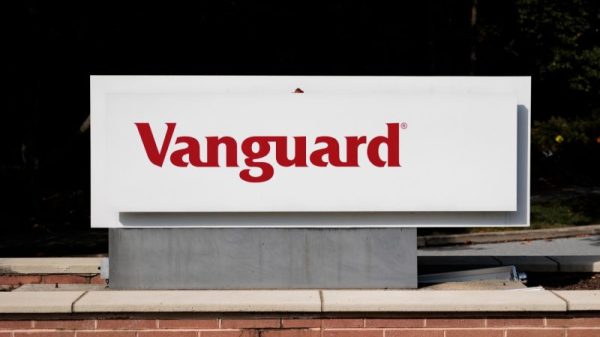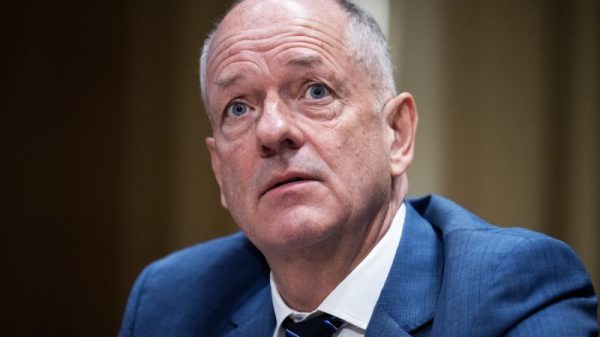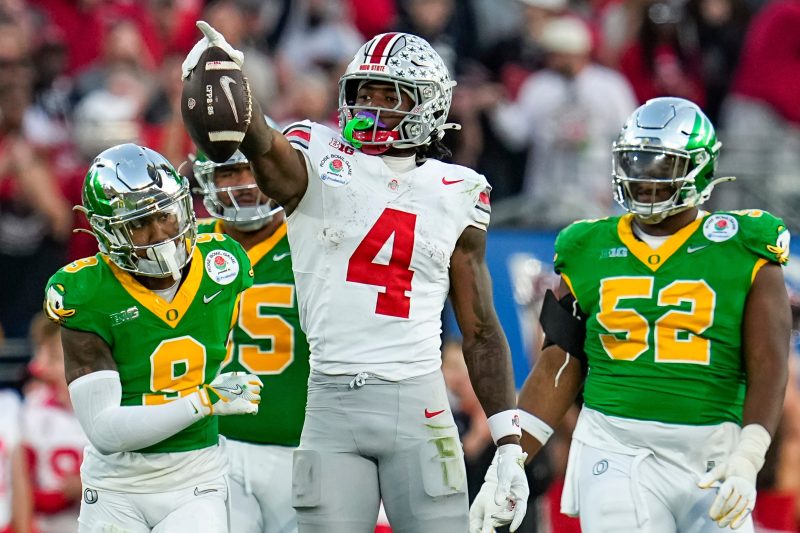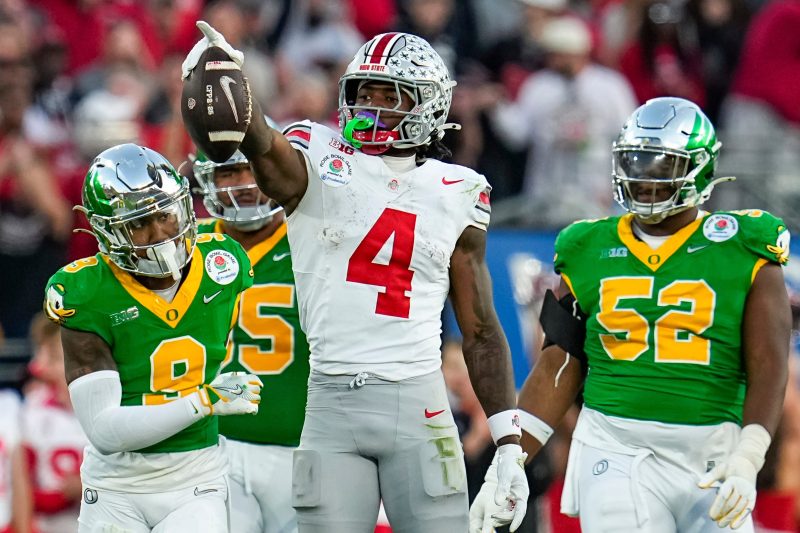
DALLAS — The best player remaining in the College Football Playoff is a 6-foot-3 man-child made of steel biceps and spring-loaded legs who can’t really be guarded by his fellow student-athletes.
And my hope for 19-year-old freshman Ohio State receiver Jeremiah Smith is that the next two weeks are the last he’ll ever see of college football.
It has been more than two decades since another Buckeyes star, Maurice Clarett, tried — and ultimately failed — to legally challenge the NFL’s eligibility rules that require football players to wait three years after high school before entering the draft.
It’s time for someone to try again. And nobody has come along with a better case than Smith.
“I mean, the guy’s NFL-ready,’ Oregon coach Dan Lanning said on New Year’s Day after Smith torched his team for 187 yards on seven receptions in the Rose Bowl. ‘He’s that talented.’
NFL STATS CENTRAL: The latest NFL scores, schedules, odds, stats and more.
In a sport where evaluating players can be brutally tough, assessing Smith is comically easy. No nuance is required to see how intelligently he runs routes, how proficiently he catches the ball and how naturally he separates from defenders. Few, if any, receivers have ever come into college football as advanced as Smith.
NFL scouts and analysts generally agree that if he were eligible for this year’s NFL draft, he would be in play — if not the outright favorite — to be picked at No. 1. Friday’s CFP semifinal against Texas here at the Cotton Bowl is likely to be another tour de force by the nation’s most gifted freshman, showcasing why he already has all the skills necessary to be a bona-fide star in the NFL.
But as things stand, Smith won’t be in the draft until 2027.
That’s great for college football. It’s like winning the lottery for Ohio State and head coach Ryan Day. And it’s not even that bad for Smith, who is going to bank millions of dollars in name, image and likeness deals before he ever plays a down in the NFL.
That last part is the major separator between Smith and Clarett, who said last year at a University of New Hampshire symposium that the issues leading to his dismissal from Ohio State in 2003 began with a desperate need for $2,000 to fix the transmission on his car.
Those hard-won, long-overdue economic rights for college athletes mean that the most likely and easiest path for Smith is to play the next two years at Ohio State, win a Heisman Trophy and become a rich young man before he even walks across the stage to shake Roger Goodell’s hand.
That’s the power of status quo: It benefits college football because stars have to stay three years; it benefits the NFL because they have a free minor-league system and it benefits current NFL players because they have a smaller pool of new players trying to take their jobs. With NIL money flowing, it isn’t even so bad these days for someone like Smith. There are a lot worse fates than having to spend two more years as the most popular and recognizable athlete on one of the best college campuses in America.
But every now and then, it’s good to challenge the status quo.
“Look, cases that we thought were settled precedent like Roe v. Wade — sorry to get on platform — but suddenly it is overruled. OK?” Shira Scheindlin, the former Southern District of New York judge who initially ruled in Clarett’s favor before it was overturned by the circuit court, said at the UNH symposium looking back on the 20-year anniversary of the case. “That didn’t make me happy, but they do it. So things change.”
Even at the time, there was wide disagreement about whether the NFL’s draft-eligibility rules violated antitrust laws.
Without getting too deep into the legal weeds, the NFL essentially argued that the rule was not subject to antitrust scrutiny under a non-statutory labor exemption.
Alan Milstein, the lead attorney for Clarett, argued there was no evidence that the rule was collectively bargained and that it actually pre-dated the first collective bargaining agreement with the NFL Players Association. It was simply part of the way the league had done business and that it was an illegal barrier to entering the NFL’s labor market. (The NFL did not agree with that characterization, for the record.)
In the end, Scheindlin ruled in Clarett’s favor, writing that the three-year rule ‘must be sacked.”
The NFL took the case to the U.S. Court of Appeals for the Second Circuit, where current Supreme Court judge Sonia Sotomayor authored the opinion that reversed Scheindlin’s ruling and kept the NFL rule in place. Clarett appealed to the Supreme Court, which declined to take the case in 2005, and there have been no serious challenges since. A spokesman for the NFLPA declined comment to USA TODAY Sports on whether it would support a player challenging the rule once again.
“I think there are grounds for reasonable people to differ on these issues, without a doubt,” Scheindlin said during the symposium.
But the thin lines on which Clarett’s case was decided 20 years ago underscore how fragile the NFL’s hold really has been on forcing players to go to college for three years. What if Milstein had filed the case in a different circuit that wasn’t in the NFL’s backyard? Would a Supreme Court with today’s makeup of six conservative justices have taken the case?
These are legitimate questions for which there are no clear answers, but the speculation is interesting. And the NFL obviously took it seriously: When it came time for a new CBA in 2006, this issue was part of the negotiations, and the three-year rule was written specifically into the agreement.
Some sports law and antitrust experts, however, believe that these kinds of age-eligibility requirements could be challenged on different grounds — that those who are harmed most (like a Smith or Clarett) are outside the scope of collective bargaining.
“To me, was a very important part of the argument (being a stranger to the bargaining unit entirely),’ Scheindlin said. “If they were to think about it today, the conservative group (on the Supreme Court) would be less concerned about the union’s feelings because those people are already players, are retired players, but they already had their shot at the NFL.”
The legal arguments are going to be far more complex than most of us non-lawyers can understand. But we all fundamentally can form an opinion on this: Does the three-year rule make sense?
In the NIL era especially, I’m not sure anymore.
Two decades ago, there was a legitimate fear that athletes who weren’t physically or mentally ready for the NFL would rush to leave college as soon as possible, and you’d end up with a generation of washouts who didn’t get the big NFL payday and messed up their education/college development.
Now, valuable college players might be able to make as much or nearly as much money by staying an extra year as they would getting drafted in the middle of the third round. It’s just a completely different economic calculation. The idea that a college sophomore, or even perhaps an exceptional freshman, can’t physically compete in the NFL no longer should matter. Let the market decide.
“The only reason anybody drafts somebody in the first round is because they’re ready to be drafted,” Milstein said at the symposium. “And the only reason they play is because they’re ready to play.”
Smith is, by all accounts, the rare college freshman ready to play in the NFL right now. And he should have that opportunity if he wants it.

